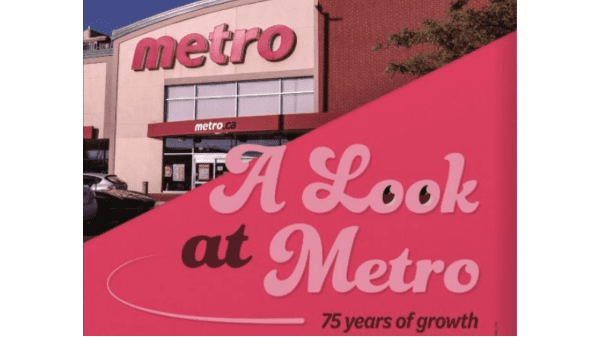The arrival of the coronavirus in spring 2020 shook the world in ways few would have believed a year earlier.
Retailers were front and center once the pandemic took hold, forced to contend with rapidly changing consumer behavior and safety protocols throughout the supply chain.
From consumer stockpiling and empty shelves to social distancing and online ordering, Canadian retailers and Metro BB #:116082—like all the rest—had to adjust quickly. Most were rewarded with an unprecedented boost in sales as restaurants shuttered and consumers were forced to cook and eat at home.
The most dramatic change in consumer behavior, however, was the adoption of online grocery shopping.
Online sales soared but the surge in orders and boom in store pickups and home delivery left supermarkets across North America scrambling to meet the new normal.
Between 2019 and 2021, Metro’s online sales rose more than fivefold. In response, the grocer opened both a dark store and multiple hub stores to concentrate on fulfilling online orders.
Metro expanded click-and-collect service to 180 stores last year. It also partnered with Cornershop by Uber Eats to provide same-day, one- to two-hour delivery in both Quebec and Ontario and extended the service to Super C stores.
The return of consumers to in-store shopping last year, however, did not curtail Metro’s online orders—sales have continued to grow, but at a slower pace.
Emerging models
Grocers have sought to ramp up fast, seamless, and accurate online shopping, store pickup, and home delivery. Some have had greater success than others.
“The question has been buy, build, or bridge? Should retailers make an acquisition, build internally, or bridge? The most successful are doing all three,” says Carol Spieckerman, president of Spieckerman Retail in Bentonville, AR Eric La Flèche, Metro’s CEO.
At look at several retailers and grocers reveals variations on Spieckerman’s observation. Walmart, for example, took a hard look at its capabilities that prompted a C$3.5 billion investment in Canada, including $110 million to expand fulfillment facilities within its supercenters.
Walmart’s Vaughn, ON hybrid store includes a 10,000-square-foot omnichannel fulfillment space—the largest of any Walmart in Canada. It can fulfill as many as eight times the online orders of an average Walmart store.
Loblaw reportedly plans to invest $6 billion to improve its in-store and digital operations. In 2020 the company fast-tracked construction of a planned robotics-driven micro-fulfillment center in a Real Canadian Superstore in greater Toronto to fill PC Express orders from nearby stores.
For its part, Sobeys invested $100 million to build a separate automated fulfillment warehouse, powered by Ocado Group PLC’s technology, for its Voilà home delivery service. Others are under construction in Montreal and Calgary.
According to Eric La Flèche, Metro’s CEO, Metro is on track.
“We’re very confident in our model: dark store for the larger urban areas, the hub stores for the medium-density areas where we can have delivery, and click-and-collect in the rest of our stores,” he detailed last August in an analyst conference call.
Metro’s first dark store was opened last June to serve online customers in Montreal, replacing three smaller hub stores. The company characterized the 100,000-square-foot facility as the “next phase of our omnichannel strategy.”
The dark store includes on-site butchers and produce handlers. The centralized location is designed to offer more delivery windows to customers and improve operating efficiencies, including order accuracy. The company has plans to open a dark store in Toronto.
“Our strategy is providing operational flexibility and, we believe, is well adapted to our local market and demand growth,” La Flèche shared in November. “When fully deployed in 2023, our online service will be available to 85 percent of the population of Quebec and Ontario.”
This is an excerpt from the Canada Supplement to the March/April 2022 issue of Produce Blueprints Magazine. Click here to read the whole supplement.



